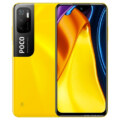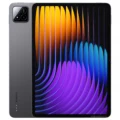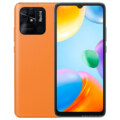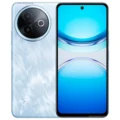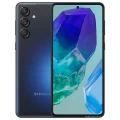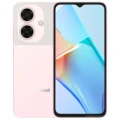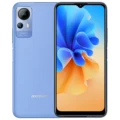Xiaomi Redmi Note 14 Pro+ 5G (India)
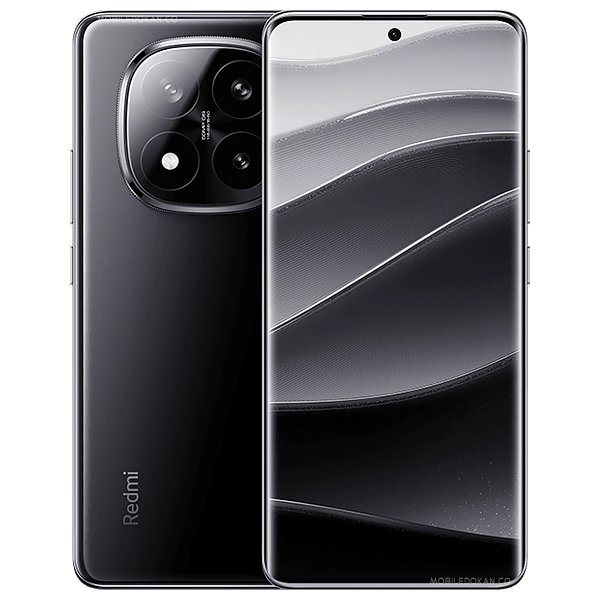

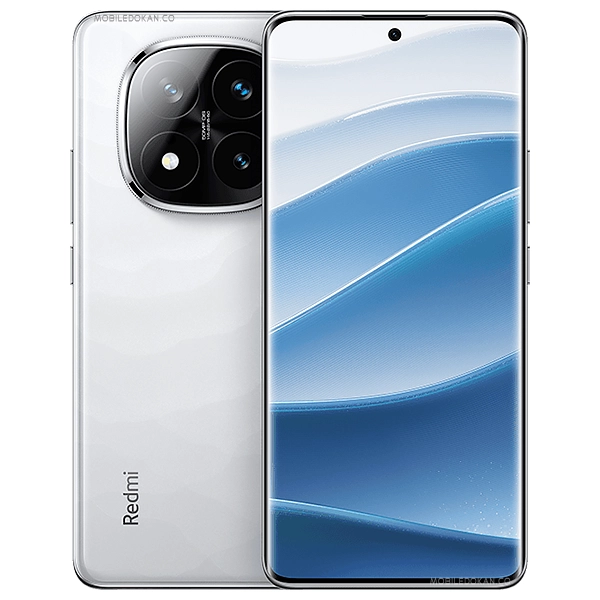
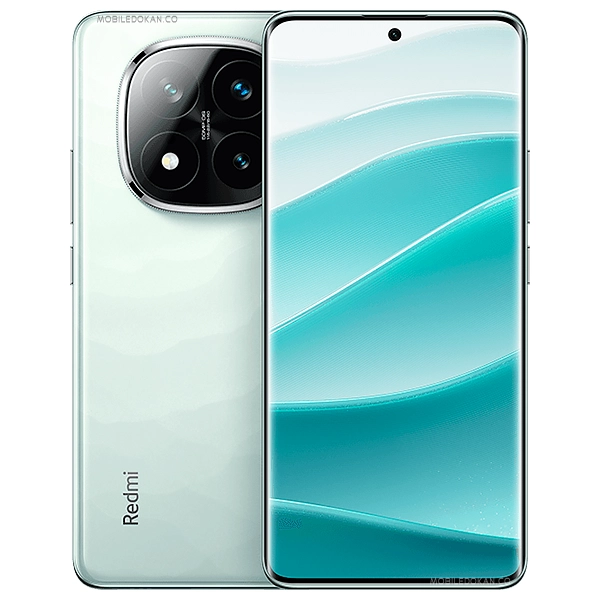
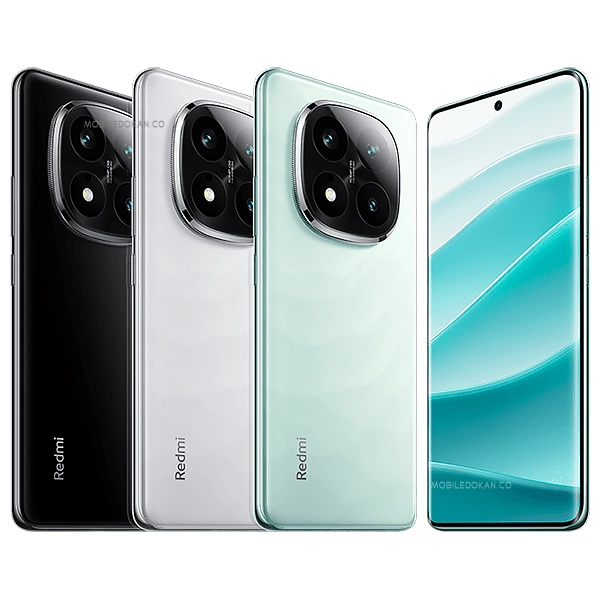








Pro and cons
Pros
- IP68/IP69K dust/water resistant.
- AMOLED screen, 120Hz refresh, Dolby Vision.
- Snapdragon 7s Gen 3 chipset, 12/16GB RAM.
- Triple rear camera with dual 50MP.
- 6200mAh battery with 90W charging.
Cons
- No external memory card slot.
Specifications
Prices
| Unofficial Unofficial prices and phones are available only non authorized shops. The device does not come with an official warranty in Bangladesh. | 12GB 256GB CN ৳35,000 / 8GB 256GB Global ৳45,000 |
Launch
| Announced | 2024, September 26 |
| Status | Available. Released 2024, September 26 |
Network
| Technology | GSM / CDMA / HSPA / EVDO / LTE / 5G |
| 2G bands It’s the 2nd generation mobile data communication technology. | GSM 850 / 900 / 1800 / 1900 - SIM 1 & SIM 2 CDMA 800 |
| 3G bands It is the 3rd generation mobile data communication technology. | HSDPA 850 / 900 / 1700(AWS) / 1900 / 2100 CDMA2000 1xEV-DO |
| 4G bands It is the 4th generation mobile data communication technology. | 1, 3, 5, 8, 19, 28, 34, 38, 39, 40, 41, 42, 48 - China |
| 5G bands | 1, 3, 5, 8, 28, 38, 40, 41, 48, 77, 78 SA/NSA - China |
| Speed | HSPA, LTE, 5G |
Body
| Dimensions It's the size of the phone in format (H x L x W) and the volume of the phone where available. | 162.5 x 74.7 x 8.7 mm (6.40 x 2.94 x 0.34 in) |
| Weight | 210.8 g (7.44 oz) |
| SIM SIM (Subscriber Identity Module) is a small card that contains a mobile network subscriber's account information. This allows the phone to use the card to attach to a mobile network. The SIM card is most commonly associated with GSM and UMTS mobile networks. Moving a SIM card from one phone to another allows a subscriber to switch mobile phones without having to contact their mobile network carrier. SIM cards can also be used by a phone to store limited amounts of data, such as phone numbers and text messages. | Nano-SIM, eSIM or Dual SIM (Nano-SIM, dual stand-by) |
| Others | IP68/IP69K dust/water resistant (up to 2m for 24 hours) |
Display
| Type A number of display technologies and types used in mobile phones TFT (Thin Film Transistor), IPS (In-Place Switching), OLED (Organic Light Emitting Diode), AMOLED (Active-Matrix Organic Light-Emitting Diode), Super AMOLED (an even advanced version of AMOLED), Resistive Touchscreen (Resistive touchscreens contain two-layer of conductive material with a very small gap between them which acts as a resistance), Capacitive Touchscreen (Capacitive touchscreen technology consists of a layer of glass coated with a transparent conductor) | AMOLED, 68B colors, 120Hz, HDR10+, Dolby Vision, 3000 nits (peak) |
| Size The industry-standard way of representing display sizes is publishing their length in inches. The screen-to-body ratio is a measure that relates to the size of the screen bezels. The bigger the ratio, the smaller the bezels are, meaning the display takes up a larger area on the device's front. | 6.67 inches, 107.4 cm2 (~88.5% screen-to-body ratio) |
| Resolution Display Resolution is the measuring way of how much pixels does a display contains. A higher resolution means more pixels and more pixels provide the ability to display more visual information (resulting in greater clarity and more detail). | 1220 x 2712 pixels, 20:9 ratio (~446 ppi density) |
| Protection | Corning Gorilla Glass Victus 2 |
| Features | Always-on display |
Platform
| OS Every Mobile Phone system runs on a base software called Operating System (OS). Operating System controls all basic operations of the Mobile (such as smartphones, PDAs, tablet computers, and other handheld devices). The Operating System allows the user to install and run third party applications (apps), apps are used to add new functionality to the device. | Android 14, up to 3 major Android upgrades, HyperOS |
| Chipset It is a group of integrated circuits designed to perform one or more dedicated functions, often with real-time computing constraints, Popular smartphones are equipped with more advanced embedded chipsets that can do many different tasks depending on their programming. | Qualcomm SM7635 Snapdragon 7s Gen 3 (4 nm) |
| CPU CPU (Central Processing Unit) mostly known as processors, CPU processes instructions in order to carry out certain functions that make your device operate properly. Processors are often described as the brain of computers, smartphones and tablets, Smartphones and tablets rely on processors to carry out their every task, Processors are an incredibly important factor in selecting any type of computing device, including your smartphone. | Octa-core (1x2.5 GHz Cortex-A720 & 3x2.4 GHz Cortex-A720 & 4x1.8 GHz Cortex-A520) |
| GPU GPU (Graphics Processing Unit) is a single-chip processor designed to rapidly manipulate and alter memory to accelerate the creation of images in a frame buffer intended for output to a display, This includes things such as lighting effects, object transformations, and 3D motion. | Adreno 710 (940 MHz) |
Memory
| Card slot A special slot for inserting a memory card for expanding your storage. It is a special slot for inserting a memory card. Memory cards allow you to expand the phone's built-in memory, A memory card (sometimes called a flash memory card or a storage card) is a small storage medium used to store data such as text, pictures, audio, and video, for use on small, portable or remote computing devices such as mobile phones, mp3 players, digital cameras. | No |
| Internal Internal memory is the memory available onboard (chip or motherboard) which is given while manufacturing at the factory. is a data storage space (flash memory) mostly used in smartphones, tablets, and other electronic devices where operating system, apps, music, photos, videos, files, and other user data Is stored. | 256/512 GB |
| RAM RAM (Random Access Memory) is a type of mobile, computer memory that can be accessed randomly, any byte of memory can be accessed without touching the preceding bytes that allow information to be stored and accessed quickly from random locations. RAM is the most common type of memory found in computer systems, smartphones, tablets, and other electronic devices. | 8/12/16 GB |
| Variant | 8GB 128GB / 8GB 256GB / 12GB 256GB / 12GB 512GB / 16GB 512GB |
Main camera
| Triple | 50 MP, f/1.6, (wide), 1/1.55", 1.0µm, PDAF, OIS 50 MP, f/2.0, 60mm (telephoto), PDAF (50cm - ∞), 2.5x optical zoom 8 MP, f/2.2, 120˚ (ultrawide), 1/4.0", 1.12µm |
| Features | LED flash, HDR, panorama |
| Video | 4K@24/30fps, 1080p@30/60/120fps, gyro-EIS, OIS |
Selfie camera
| Single | 20 MP, (wide) |
| Features | HDR, panorama |
| Video | 1080p@30/60fps |
Sound
| Loudspeaker Loudspeaker is a small sound driver fitted within a mobile phone, which is used to produce sound. | Yes, with stereo speakers |
| 3.5mm jack A common connector for plugging in audio output or input. | Unspecified 24-bit/192kHz Hi-Res & Hi-Res wireless audio |
Connectivity
| WLAN Wireless Local Area Network (WLAN) is a method of distributing data wirelessly to a local area network practically to the internet. It is a popular wireless networking technology using radio waves to provide high-speed network connections that allow devices to communicate without cords or cables, Wi-Fi is increasingly becoming the preferred mode of internet connectivity all over the world. | Wi-Fi 802.11 a/b/g/n/ac/6, dual-band, Wi-Fi Direct |
| Bluetooth Bluetooth is a wireless technology standard for exchanging data over short distances from fixed and mobile devices. It is a wireless communications technology for exchanging data between mobile phones, headsets, computers, and other network devices over short distances without wires, Bluetooth technology was primarily designed to support simple wireless networking of personal consumer devices. | 5.4, A2DP, LE, LHDC |
| GPS GPS (Global Positioning System) originally Navstar GPS, is a satellite-based radio navigation system. It is a satellite-based radio navigation system, GPS permits users to determine their position, velocity, and the time 24 hours a day, in all weather, anywhere in the world, In order to locate your position, your device or GPS receiver must have a clear view of the sky. | GPS, GALILEO, GLONASS, QZSS, BDS (B1I+B1c) |
| NFC NFC (Near Field Communication) is a shorter range of high-frequency data transferring technology. It is a set of standards for smartphones and similar devices to establish peer-to-peer radio communications with each other by touching them together or bringing them into proximity, usually no more than a few inches. | Yes (market/region dependent) |
| FM radio FM broadcasting is a method of radio broadcasting using frequency modulation technology. | Unspecified |
| USB USB is a standard for a wired connection between two electronic devices, including a mobile phone and a desktop computer. | USB Type-C 2.0, OTG |
| Infrared port IrDA (Infrared Data Association) is an old data sharing technology in the means of Infrared Port. It uses a beam of infrared light to transmit information and so requires a direct line of sight and operates only at close range. |
Features
| Sensors A sensor is a device, module, or subsystem whose purpose is to detect events or changes in its environment and send the information to other electronics. The specific input could be light, heat, motion, moisture, pressure, and location, The output is generally a signal that is converted to use in computing systems, a location sensor, such as a GPS receiver is able to detect the current location of your electronic device. | Fingerprint (under display, optical), accelerometer, gyro, compass, proximity (ultrasonic) |
Battery
| Type Cell phones run on various kinds of batteries depending on the manufacturer, phone size or shape, and features. There are basically four types of cell phone batteries Lithium Polymer (Li-Po), Lithium-Ion (Li-Ion), Nickel Metal Hydride, and Nickel Cadmium. | Non-removable Li-Po |
| Capacity The unit of capacity is milliamp-hours (mAh), which means 3000mAh can be put on the battery to discharge it in one hour. The battery capacity represents the maximum amount of energy that can be extracted from the battery under certain conditions. | 6200 mAh |
| Charging | 90W wired, PD |
More
| Made by | China |
| Color | Black, White, Green |
Disclaimer
We do not guarantee that the information of this page is 100% accurate and up to date.
Xiaomi Redmi Note 14 Pro+ 5G (India) Price in Bangladesh March 2025
The Xiaomi Redmi Note 14 Pro+ 5G (India) is now available in three variants (256/512GB/8/12/16GB RAM). The Xiaomi Redmi Note 14 Pro+ 5G (India)’s Price is 35000 Taka in Bangladesh. Redmi Note 14 Pro+ 5G (India) has a 6200mAh battery with 90W fast charging. This device is running with Android 14 and is powered by the Qualcomm SM7635 Snapdragon 7s Gen 3 (4 nm) chipset.
| Model | Xiaomi Redmi Note 14 Pro+ 5G (India) |
| Price | BDT. 35,000 |
| Display | 6.67″ 1220×2712 pixels |
| RAM | 8/12/16 GB |
| ROM | 256/512 GB |
| Released | 2024 September |
Xiaomi Redmi Note 14 Pro+ 5G (India) highlight
Xiaomi Redmi Note 14 Pro+ 5G (India) will be launched in September 2024. The Redmi Note 14 Pro+ 5G (India) was launched with a model number unknown. Firstly, Its dimensional measure is 162.5 x 74.7 x 8.7 mm and the weight is 210.8 grams. Secondly, the Redmi Note 14 Pro+ 5G (India) display is a 6.67-inch AMOLED panel with 1220 x 2712 pixels resolution. The display is protected with Corning Gorilla Glass Victus 2. Thirdly and most importantly, It is powered by the Qualcomm SM7635 Snapdragon 7s Gen 3 (4 nm) and runs with Android 14. Moreover, it has an Octa-core (1×2.5 GHz Cortex-A720 & 3×2.4 GHz Cortex-A720 & 4×1.8 GHz Cortex-A520) CPU.
Xiaomi Redmi Note 14 Pro+ 5G (India) phone has a triple-camera setup on the back. This formation comprises 50MP wide, 50MP telephoto, and 8MP ultrawide cameras. It has a 20MP selfie camera inside the punch hole of the display. The video recording capability is 4K@24/30fps, 1080p@30/60/120fps, gyro-EIS, OIS. Its RAM and ROM have three (256/512GB/8/12/16GB) variants. On the other hand, it can not support microSDXC on using a shared SIM slot. Certainly, Redmi Note 14 Pro+ 5G (India) has a 6200mAh battery with 90W fast charging. It has a dual nano-SIM card slot. That is to say, the Redmi Note 14 Pro+ 5G (India) is 2G/3G/4G/5G supportable. The fingerprint sensor is under the display.
On the other hand, it has WLAN, Bluetooth, a USB port, and Face unlock, among other features.
Your question and our opinion about the Note 14 Pro+ 5G (India)
Which question you will have about this phone? Let’s justify these. There, we are including the major questions and answers about this phone. So, let’s start now.
It will launch in September 2024.
The price of the Xiaomi Redmi Note 14 Pro+ 5G (India) is BDT. 35,000.
It has three variants of 8/12/16GB in RAM and 256/512GB in ROM. But, overall, you can get five variants (128GB/8GB, 256GB/8GB, 256GB/12GB, 512GB/12GB, 512GB/16GB) on the market.
It has a 6.67″ AMOLED Display panel with 1220 x 2712 pixels.
It contains Qualcomm SM7635 Snapdragon 7s Gen 3 (4 nm) chipset and Android 14. It has up to an Octa-core (1×2.5 GHz Cortex-A720 & 3×2.4 GHz Cortex-A720 & 4×1.8 GHz Cortex-A520) CPU.
The triple-camera setup on the back is a 500MP+50MP+8MP camera and a 20MP selfie camera. The video recording capability is 4K@24/30fps, 1080p@30/60/120fps, gyro-EIS, OIS.
It supports a 5G network with 2G / 3G / 4G.
The battery capacity is a 6200mAh Li-Polymer battery with 90W fast charging.
Fingerprint, accelerometer, gyro, proximity, and compass.
Xiaomi manufactured it and this phone is made in China.
Reason to Buy
In this paragraph, we are going to describe the important reasons why people buy this smartphone. Why did they buy it? Firstly, when anyone wants to buy a device, they look for premium features according to its price. So, let us find out some eligible features of the Redmi Note 14 Pro+ 5G (India).
Our Verdict
In conclusion, we are giving our verdict on this device. If you want to buy the best 5G smartphone under 50K Taka. Then Xiaomi Redmi Note 14 Pro+ 5G (India) will be in the first row among the best smartphones. Dear friends, if you are interested in online games like Free Fire, you can buy them because it has RAM and a well Processor using the Qualcomm SM7635 Snapdragon 7s Gen 3 (4 nm) chipset. If you want a big backup on charge, you can buy this because it has a huge 6200mAh battery. In addition, it’s a 5G supportable smartphone. So, you can get good network facilities on it. However, it has a triple-cam setup with a 50MP primary camera. So, the image and video capabilities may be good. Therefore, to judge all of these reasons you can buy this.
Reviews/comments

Redmi note 14 pro plus
Very good phone

Khub vhalo mone hosse
ATI Amar dakha aktu hub Valo Fon mone hosse

Nice phone
Amake ai phonta onek valo legecha

Bad Sides
Almost everything about this phone is fine. But for me its camera quality is a bit bad. xioami could have done it a little better 😞🙏 It's my personal review . Thanks

Bad side
I think Xiaomi can do better in chipset because 7s gen 3 is not enough for high graphics game or anything🙂

Mr. Ashikur
মোটামুটি ভালই আছে কিন্তু ক্যামেরায় 4k60fps সাপোর্ট…
আবার সামনের ক্যামেরায় 4k সাপোর্ট নাই
এগুলা থাকলে আরো ভালো হতো….!!
The Budget-Friendly Flagship Challenger
Overall, the Xiaomi Redmi Note 14 Pro+ is a strong competitor in the mid-range segment, especially for users who prioritize a great display, battery life, and an affordable price. However, the Snapdragon 7s processor might be limiting for those seeking high-performance gaming capabilities. For its price point, though, the Redmi Note 14 Pro+ provides significant value and is worth considering if you're looking for a feature-rich phone without a flagship price tag.
Xiaomi 👏

To be honest, I’m not a fan of it.
While the design is attractive, some models may use plastic components that feel less premium compared to glass or metal alternatives.

Problem in gaming
Not good for Gaming.

For users
After reading this phone of all facilities, I think it will be very good for users because of high quality of battery, 5G network support and Camera quality is good.
Therefore I think I will buy this smart phone the next year (2025).
FA Faruk
The phone feels unstable to use.Was the phone my dream?

Chepset
Price range wise low quality chepset.i dont like it

Sera phone
Phone asolei onek valo
